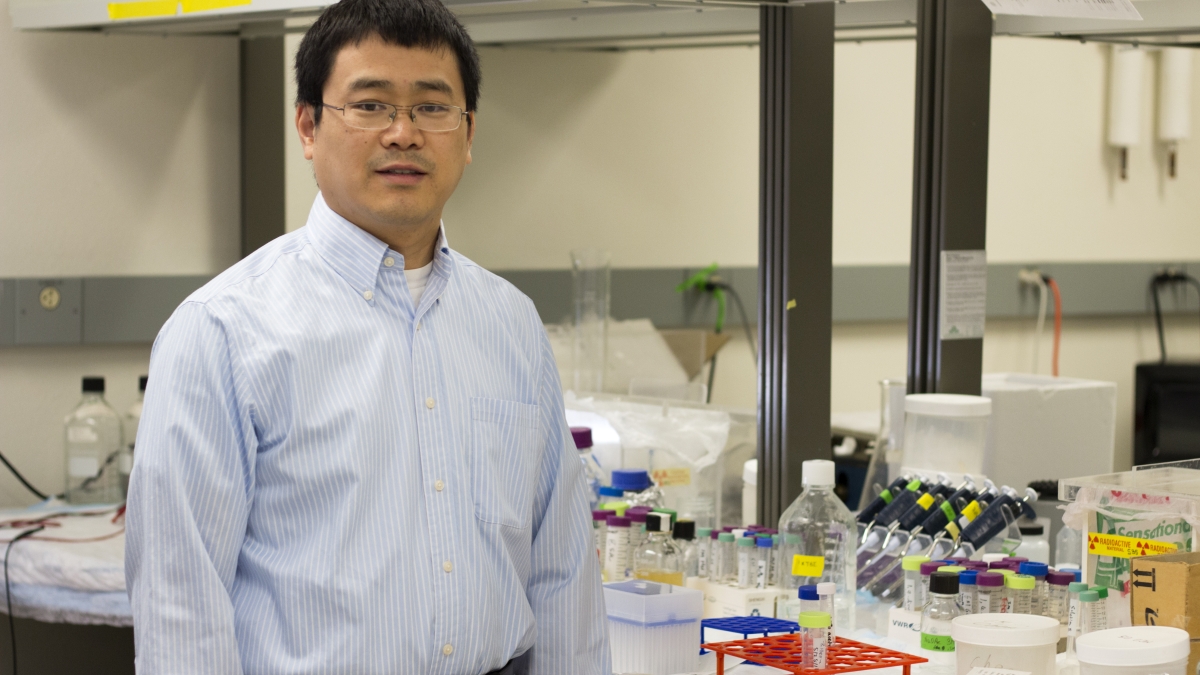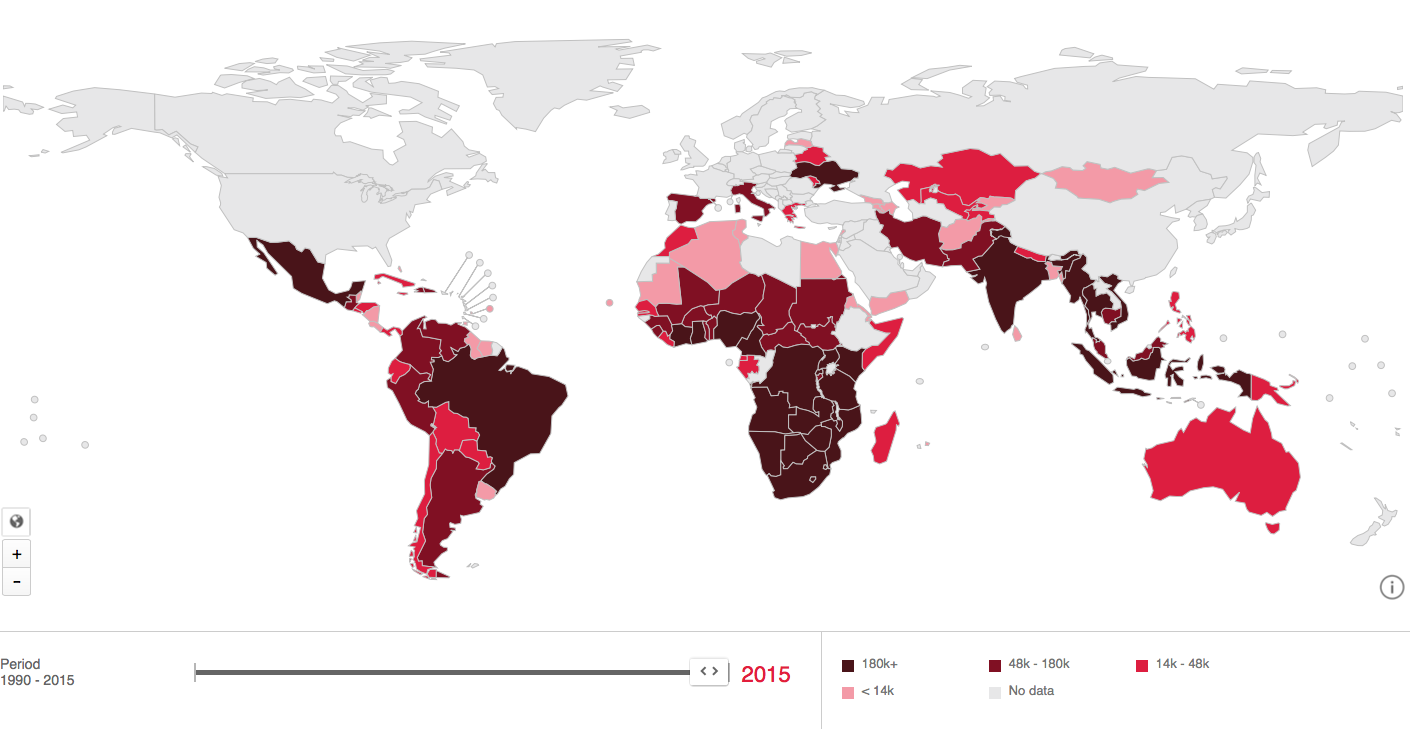A better condom for a better world

Shengxi Chen, researcher with the Biodesign Institute’s center for BioEnergetics responding to a Bill and Melinda Gates Foundation global health grand challenge, has designed a new skin-like condom.
As a tool for preventing the spread of HIV and other sexually transmitted diseases, condoms are cheap and nearly 99 percent effective.
The problem? They’re uncomfortable. And that makes men less likely to use them.
And that’s bad news in the fight against STDs. According to the UN, there were roughly 2 million new HIV infections in the world last year.
With a mission to improve worldwide health, the Bill and Melinda Gates Foundation put out a call to researchers around the world to build a better condom.
Shengxi Chen, a biochemist at Arizona State University’s Biodesign Institute, has done just that.
Chen, who received a $100,000 Grand Challenges grant from the Gates Foundation in 2014, has created a material that mimics human skin, resulting in a condom that is more comfortable and thus more likely to be used.
“With condoms, for many, many years nobody changed them,” said Chen, whose past research included working on a low-cost HIV diagnostic.
In 2015 there were 2.1 million new HIV infections worldwide, making it a total of 36.7 million people in the world living with HIV. More than half of that population live in Eastern and Southern Africa — the most HIV affected region in the world, according to the Joint United Nations Programme of HIV/AIDS (UNAIDS).
To make this new material more skin-like, Chen made it more hydrophilic, or water-loving, like human skin — eight times more hydrophilic, in fact, than natural latex condoms.
“I thought, if we make something really close to skin, people would not mind using condoms,” Chen said. “Human skin has a lot of water; we call it hydrophilic. Most condoms are hydrophobic, but this material likes water.”
Testing also shows that, in terms of strength and flexibility, Chen’s skin-like condom performs better than latex condoms currently on the market. The condom is made from a new, patented material that has 1.7 times more tensile strength than natural latex condoms, as measured through stretching and air-pressure tests.
Creating a better condom is only part of what it will take to make an impact on the spread of HIV — a combination of medical treatment, education, social change and reliable access to condoms is the best strategy — but it’s a big step in the right direction.
The Gates Foundation chose Chen and 10 other researchers for the Grand Challenges grant, from a field of 812 applicants. The project goals included ease of use, comfort — and even increasing sensation if possible.
With his patented condom, Chen has registered a start-up company called Joys LLC.
“We are trying to put it to the market because I think that it is truly interesting,” he said. “It’s better than the other condoms, and we don’t want this to just stay in the lab.”
The next step is to obtain funding, through grants or investors, to produce the condom in a commercial setting and run it through the safety and performance tests required by the U.S. Food and Drug Administration.
The new condom is just one of the ways in which researchers at the Biodesign Institute are helping in the fight against STDs. Bertram Jacobs, virologist in the School of Life Sciences and the Biodesign Institute, focuses his research on developing an HIV vaccine. Karen Anderson, a medical oncologist and researcher in the School of Life Sciences and the Biodesign institute, is working on early detection of certain cancers, such as cervical cancer caused by the sexually transmitted human papillomavirus (HPV).
And making news earlier this summer, researchers at the Biodesign Institute and Wyss Institute in Boston have developed a paper-based diagnostic that uses just a drop of blood or saliva to quickly tell if someone is infected with the Zika virus, which can be transmitted through sexual contact as well as by mosquito bite.
Written by Ally Carr, ASU Biodesign Institute
More Science and technology

Transforming Arizona’s highways for a smoother drive
Imagine you’re driving down a smooth stretch of road. Your tires have firm traction. There are no potholes you need to swerve to…

The Sun Devil who revolutionized kitty litter
If you have a cat, there’s a good chance you’re benefiting from the work of an Arizona State University alumna. In honor of…

ASU to host 2 new 51 Pegasi b Fellows, cementing leadership in exoplanet research
Arizona State University continues its rapid rise in planetary astronomy, welcoming two new 51 Pegasi b Fellows to its exoplanet…


